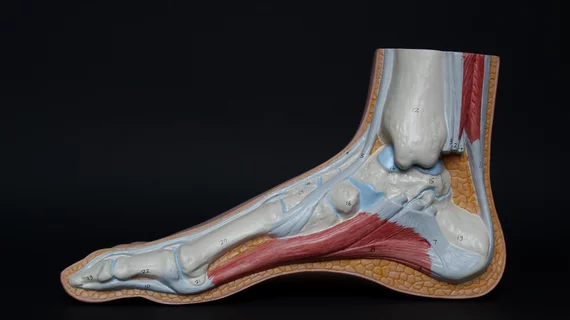Injuries of the plantar plate—the cluster of ligaments underneath the four smaller “knuckles” of the toes—are better assessed with MRI than with ultrasound scans, according to new research conducted by American podiatrists and published in the European Journal of Radiology.
Ultrasound, however, allows for dynamic stressing of the plantar structure during imaging and tops costlier MRI in sensitivity. This is a potentially crucial attribute for confirming this type of foot injury, which can be difficult to discern at the point of care and is common among athletes, the authors note.
Reviewing and analyzing recent and relevant published studies, 10 in number, were Rachel Albright, DPM, MPH, of Stamford Health in Connecticut, Adam Fleischer, DPM, MPH, of Rosalind Franklin University in Chicago, and colleagues at Weil Foot & Ankle Institute in Illinois and the Dartmouth Institute for Health Policy and Clinical Practice in New Hampshire.
The studies reflected 227 MRIs and 238 ultrasounds.
Using surgical confirmation as their source of ground truth, the team found foot ultrasound bested foot MRI on pooled sensitivity, 95% to 89%, while lagging on specificity, 52% to 83%.
The results suggest a negative ultrasound “would likely rule out a plantar plate injury in the presence of an equivocal physical exam,” the authors comment in their discussion.
Meanwhile, grading the severity of the injury “is best served with MRI,” given the modality’s capacity to “provide added insight into the joint’s supporting structures (e.g., collateral ligaments) and integrity.”
More:
MRI can offer detailed images that allow greater ease of grading for plantar plate injuries and offers the surgeon insight into the plantar plate integrity for improved surgical planning but are dependent on the ability of a skilled radiologist who is familiar with forefoot pathology. These findings may justify the added costs of MRI to ensure accurate diagnosis of plantar plate pathology.”
More coverage of foot imaging:
Radiologists could cut surgery costs with imaging-first approach to common foot ailment
Focus on POCUS: Hey, Emergency Medicine and Radiology: Who’s in Charge Here?
Reference:
Rachel Albright, Brandon Brooks, Manali Chingre, Erin Klein, Lowell Weil Jr., Adam Fleischer, “Diagnostic Accuracy of Magnetic Resonance Imaging (MRI) Versus Dynamic Ultrasound for Plantar Plate Injuries: A Systematic Review and Meta-Analysis.” European Journal of Radiology, April 29, 2022. DOI: https://doi.org/10.1016/j.ejrad.2022.110315

